NWA Outside
Exploring Outdoor Recreation in Northwest Arkansas
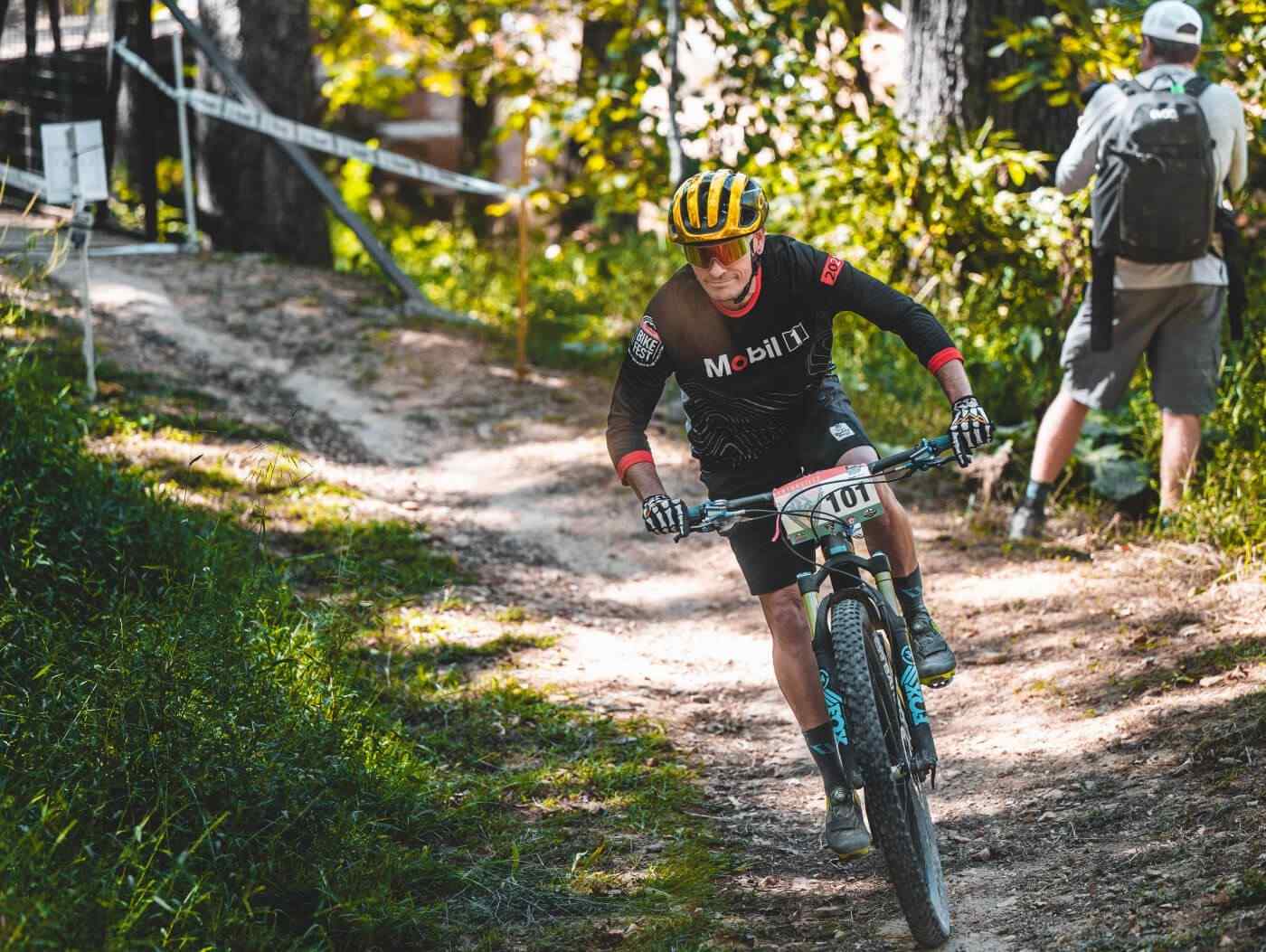
Introduction To Mountain Biking: Safety, Slang, Signage
Mountain bikers have a unique language with many slang terms you may have heard thrown around while on the trail. This can confuse a beginner rider, so this guide will help you understand what other riders are saying and meaning. We will break down trail signage and difficulty ratings, mountain biking slang, and everyday obstacles on trails.
Types of Mountain Biking
XC: Cross-country is a type of mountain biking that is usually on easy to difficult rated singletrack trails or fire roads (see below). Cross-country mountain biking is more endurance-based than skill-based, meaning you aren't as focused on navigating highly technical obstacles or jumps and instead are focused on distance and speed. Cross-country mountain bikes are also different as they are more similar to a hybrid or a hardtail mountain bike (see below). The tires are skinnier and have smaller suspension setups since they focus more on speed than terrain. Cross-country biking is a great way to get into mountain biking since it builds endurance and allows you to ride on easier and more predictable trail systems.
- The Blowing Springs Loop Trail and Back 40 in Bella Vista, are one of Northwest Arkansas' premier cross-country singletrack trails.
Trail: Another great way to get into mountain biking is the discipline of trail riding. This is the more casual style of mountain biking where you select your trails, and you go to either trail systems or bike parks and ride a variety of trails. A good bike for this type is anything from an excellent hybrid to a hardtail as they favor comfort over performance for this type of mountain biking.
- Any trail at Coler Mountain Bike Preserve or Mount Kessler Regional Park is a great option.
Enduro/All Mountain: Most commonly referred to as Enduro, this is a type of mountain bike racing. Enduro includes elements from all kinds of mountain biking with uphills, downhills and sometimes advanced terrain and obstacles. However, in Enduro, only the downhill parts of the race are timed, and the uphill parts are not timed. Enduro races also have time limits for completing the race and certain stages to ensure riders stay within a specific time guideline. Enduro is more of a sport to watch when starting out and is very spectator friendly.
- In Northwest Arkansas, most of the enduro riding and races take place at both Coler Mountain Bike Preserve and Slaughter Pen Trail in Bentonville, Arkansas.
Downhill: Often considered one of the more extreme styles of mountain biking due to its harsh terrain and speed. Downhill mountain biking is most commonly done at bike parks, so riders can easily ride back to the top of the hill or ride a ski lift to the top. On downhill trails, expect to see steep and extremely rough terrain with a lot of jumps and rock obstacles. The bike you would want to do downhill is one with full suspension in the front and rear and a lot of travel so you can safely handle jumps and rocky terrain.
- For downhill mountain biking Lake Leatherwood Trail in Eureka Springs is by far the best option in Northwest Arkansas. The Lake Leatherwood Trail is often the site of the annual Fat Tire Festival with downhill races.
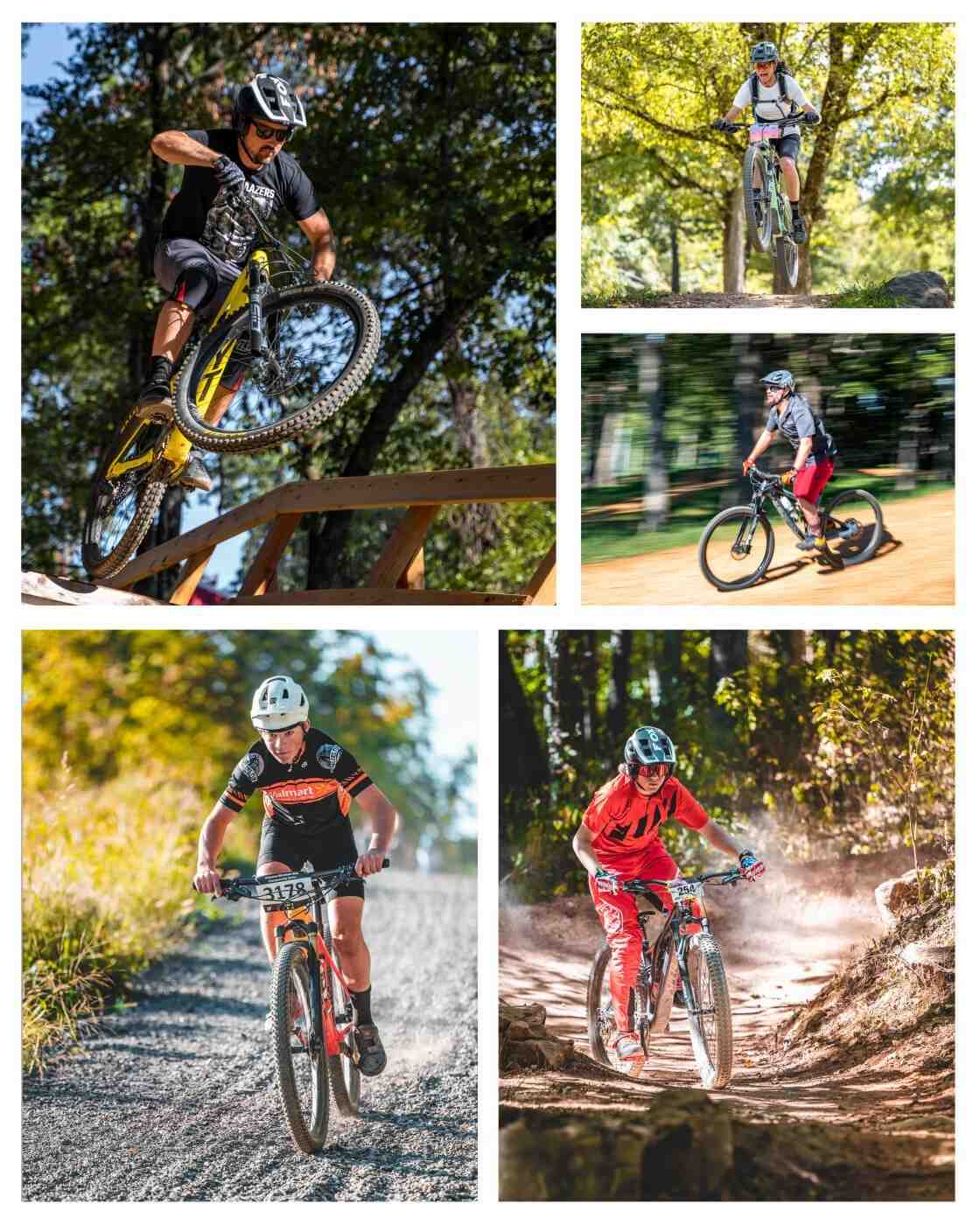
Ratings
The trail rating system was created by ski resorts and was quickly adapted by the mountain biking community. The leading organization that ensures these ratings are accurate and standardized is the International Mountain Biking Community or IMBA. Trails are rated, so riders know what to expect before riding the trail. The ratings allow you to understand what obstacles may be encountered and make informed decisions based on your skill level to minimize the likelihood of injuries. It is also important to note that while trail markers have the rating on the signage, it is essential to memorize or carry a chart for each rating symbol and what they mean.
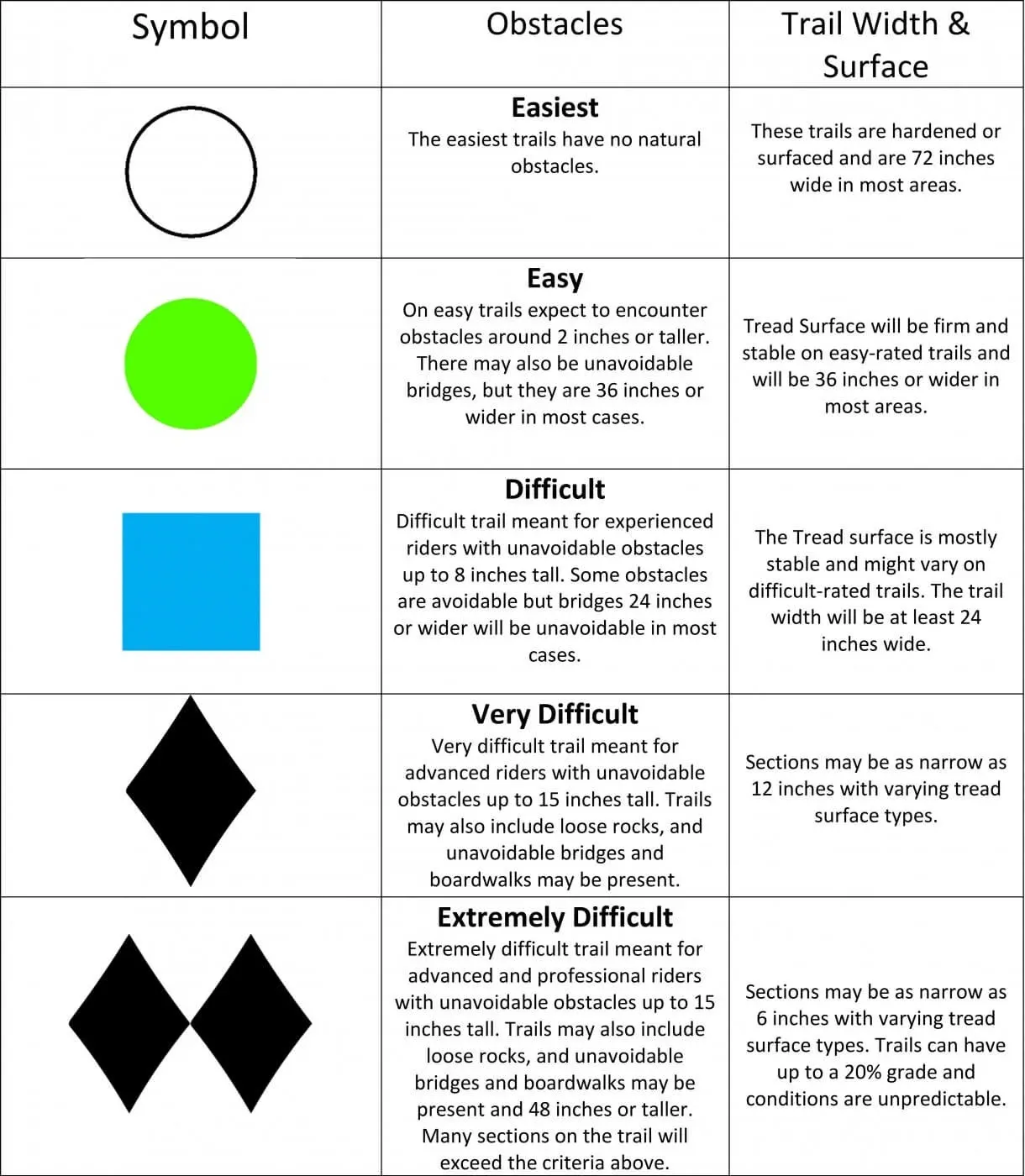
Trail Signage
Trail signs can vary greatly depending on the builder and whoever owns or maintains the trails. This leaves quite a bit of ambiguity in creating a guide for trail signage. The most common trail sign is a wooden post or plaque. These wooden signs will usually have the rating if it is a mountain bike trail, the distance of the trail, and the trail name. Another type of sign that may be present is an information board, which will let you know what types of outdoor recreation the trail is approved for, such as hiking, biking, equestrian, if it is handicap accessible, etc. Some trail systems like Coler Mountain Bike Preserve in Bentonville, Arkansas, even have trail conditions posted and whether the trail is open which is extremely helpful when planning what routes and trails you want to take. Remember, trails are shared by many different types of riders, so always share the trail.
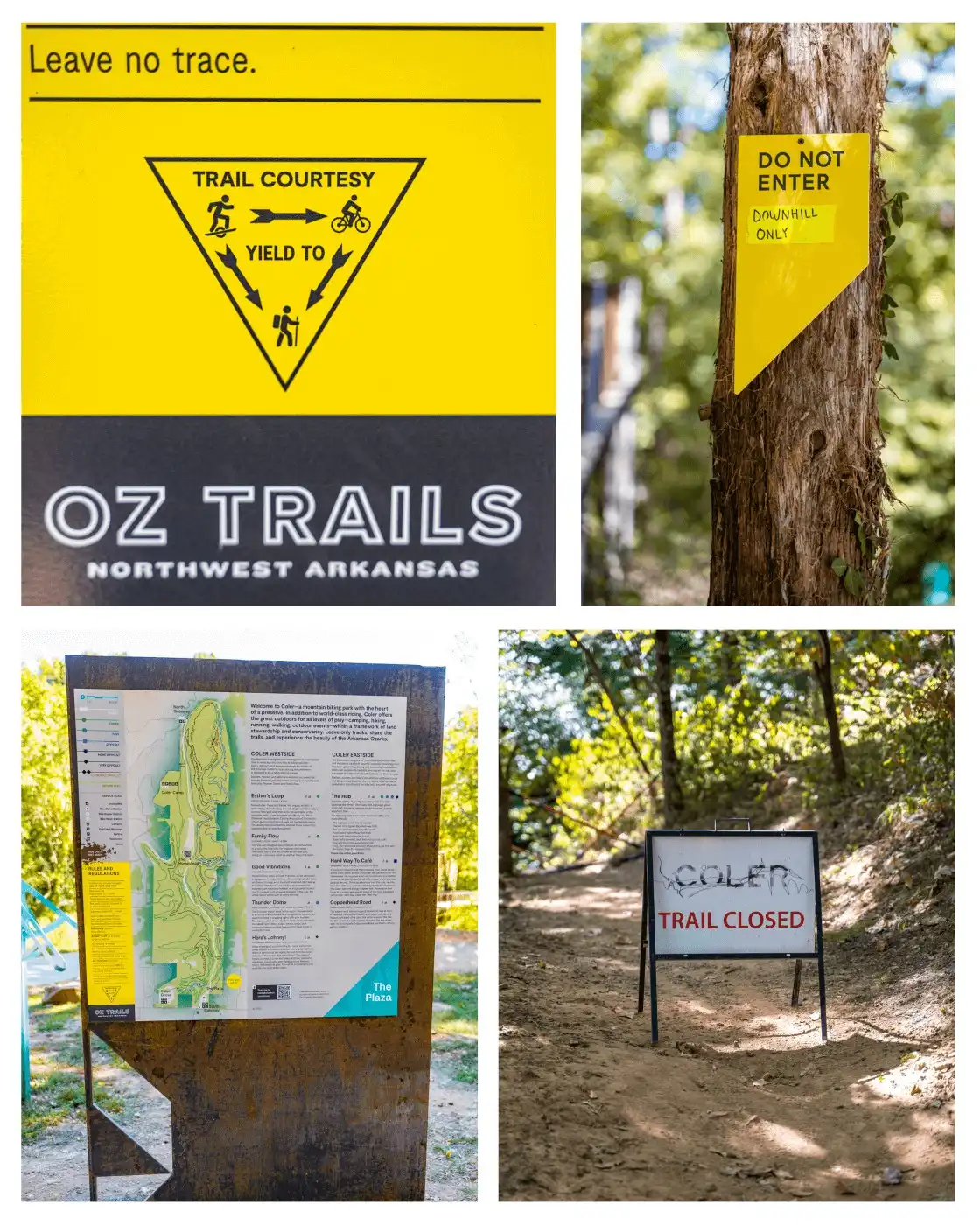
Image Courtesy of Arkansas Tourism
Common Obstacles
A-Frame: An A-Frame is a short boardwalk that is a ramp over another obstacle. Sometimes d-frames are present on trails for skill building and learning how to go up and down a boardwalk. On easier trails, they will be avoidable but on more challenging trails you may be forced to ride over them. The All-American Trail at the Slaughter Pen Trail System has some a-frames that are great to practice on.
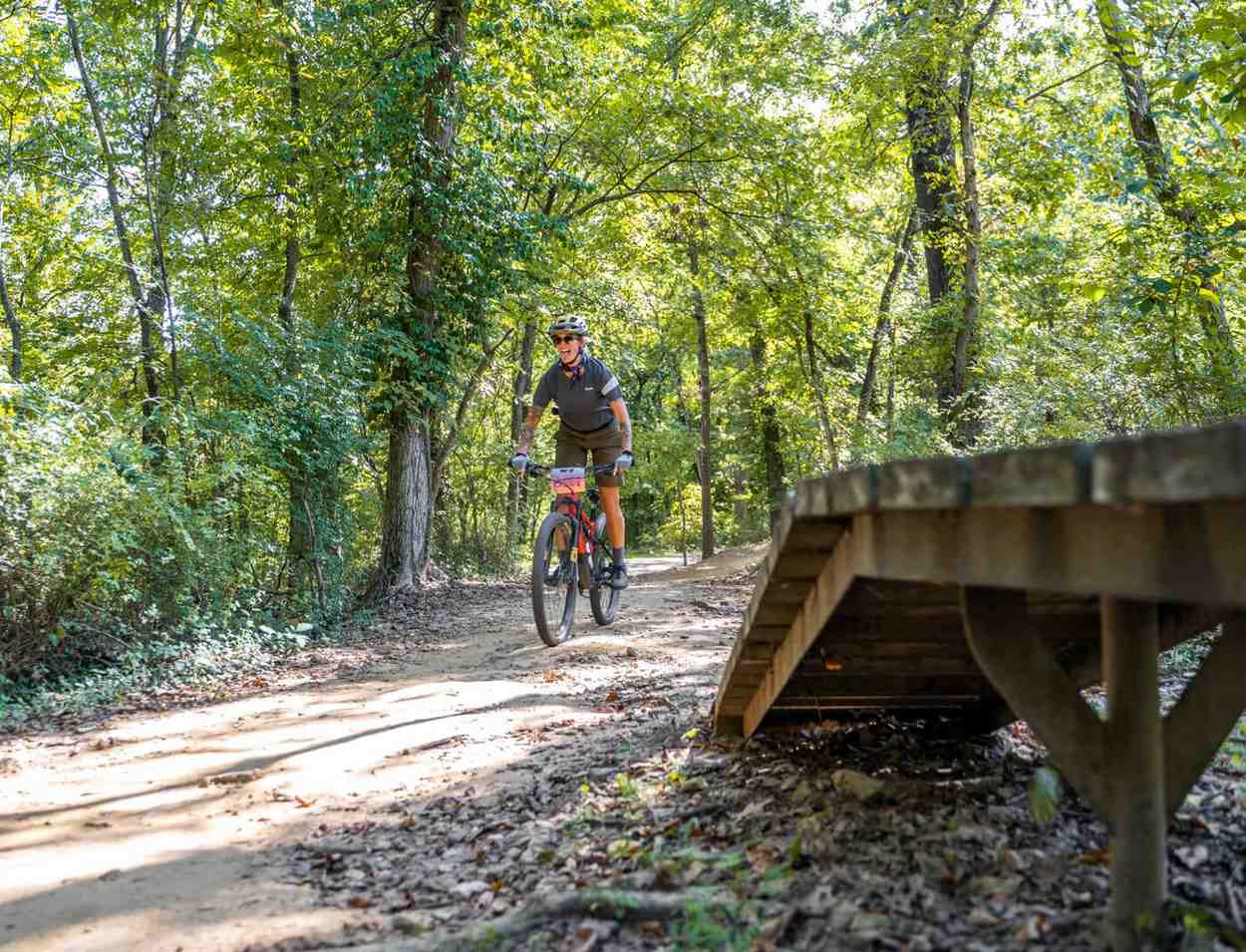
Rock Garden: Rock gardens are sections of a trail that are full of rocks and sometimes multiple routes that allow for riders to test their skill levels.
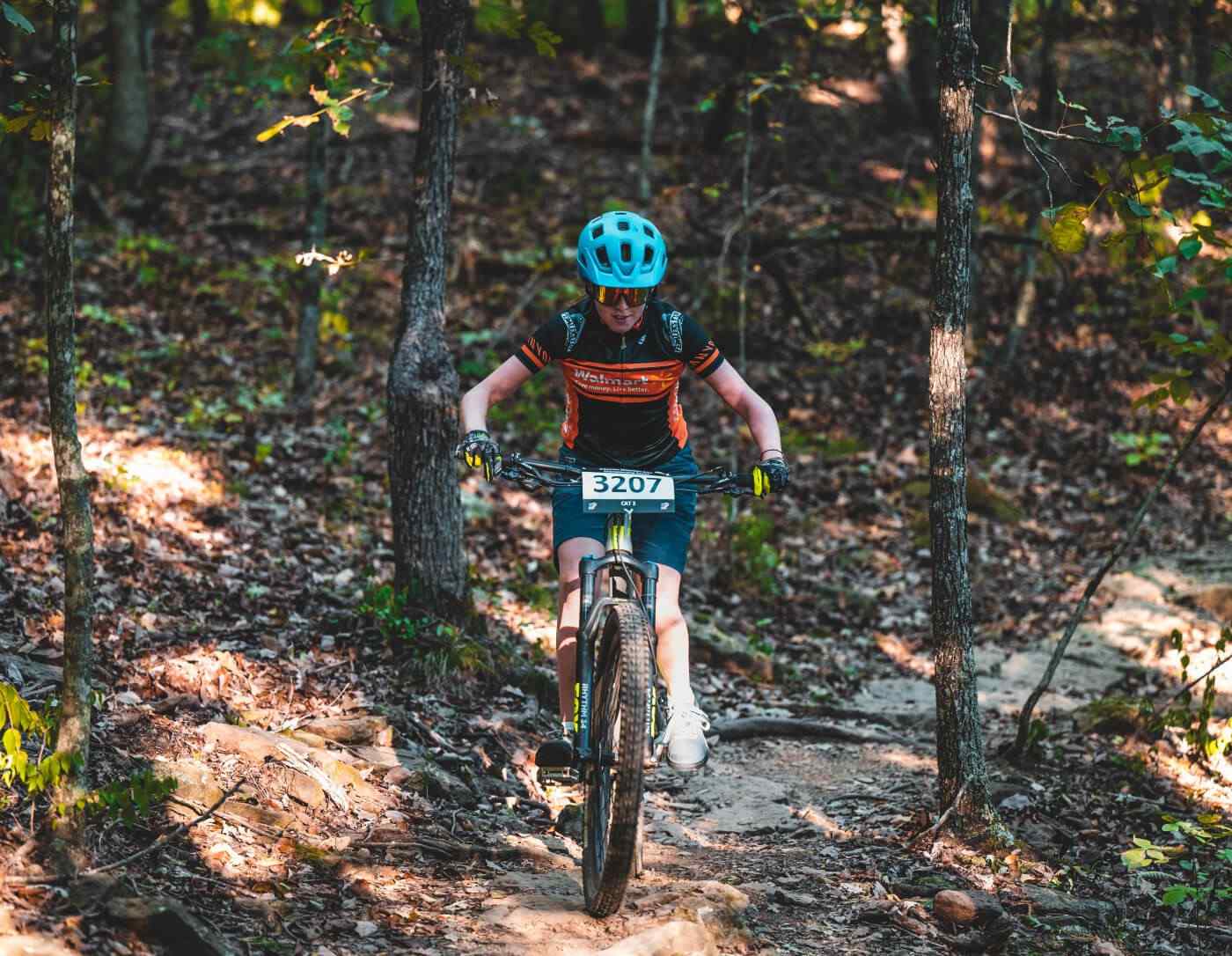
Berm: A berm is a banked corner in the trail made of compacted dirt and sometimes rock. Berms allow riders to navigate corners at higher speeds than a flat corner. The new Traverse Trail at the University of Arkansas campus is a great trail to practice your cornering.
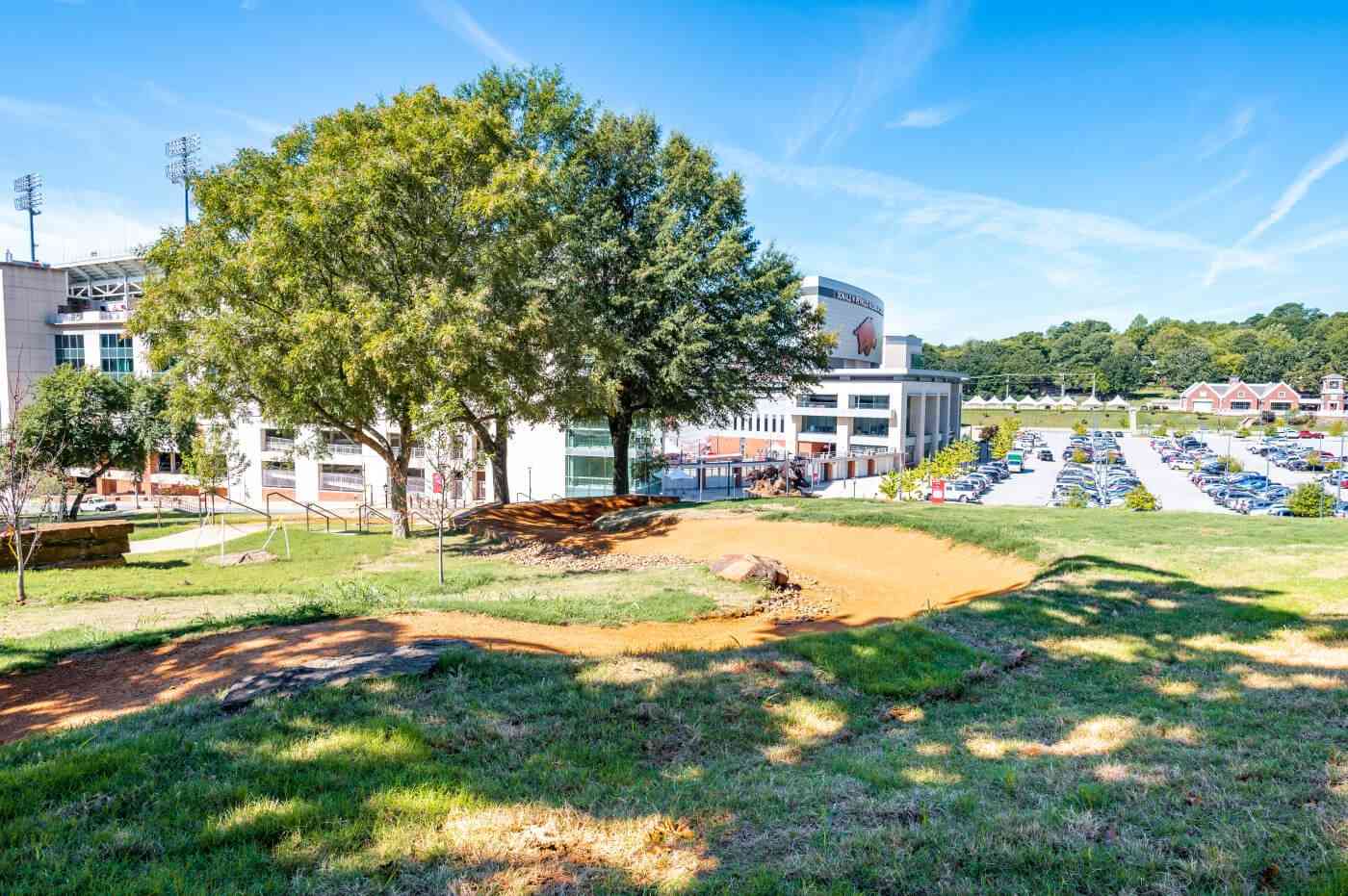
Flat Corner: A flat corner is a turn in the trail but does not have a berm. This forces riders to take speed and their skill level into concern. They are common on trails at Kessler Mountain Regional Park in Fayetteville, Arkansas.
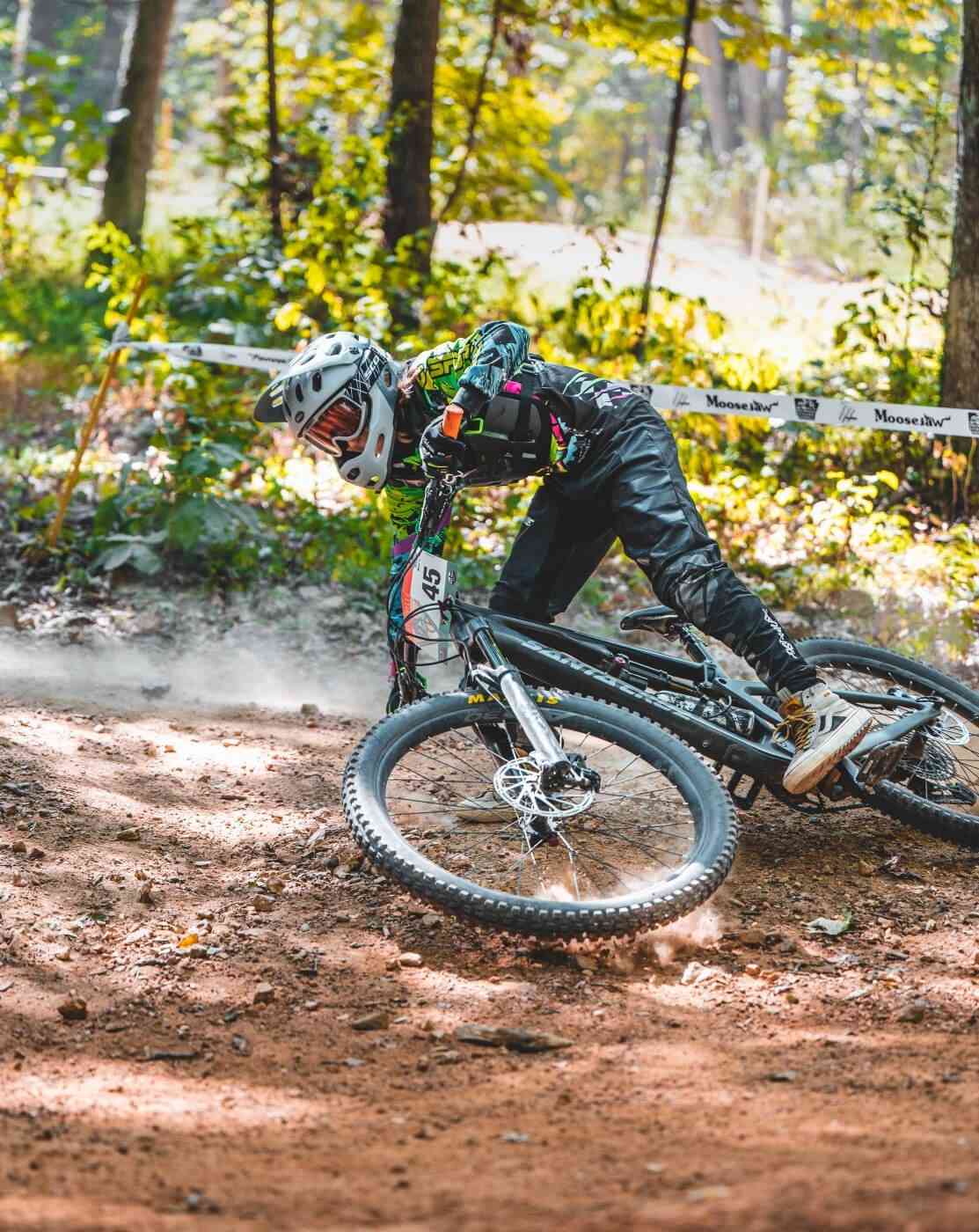
Bridge/Boardwalk: Boardwalks are manmade wooden structures on trails that bridge over obstacles like creeks or wetlands. They can be found on very easy trails at Lake Atalanta and Osage Park or difficult trails at the Tsa La Gi Bike Park and Coler Mountain Bike Preserve.
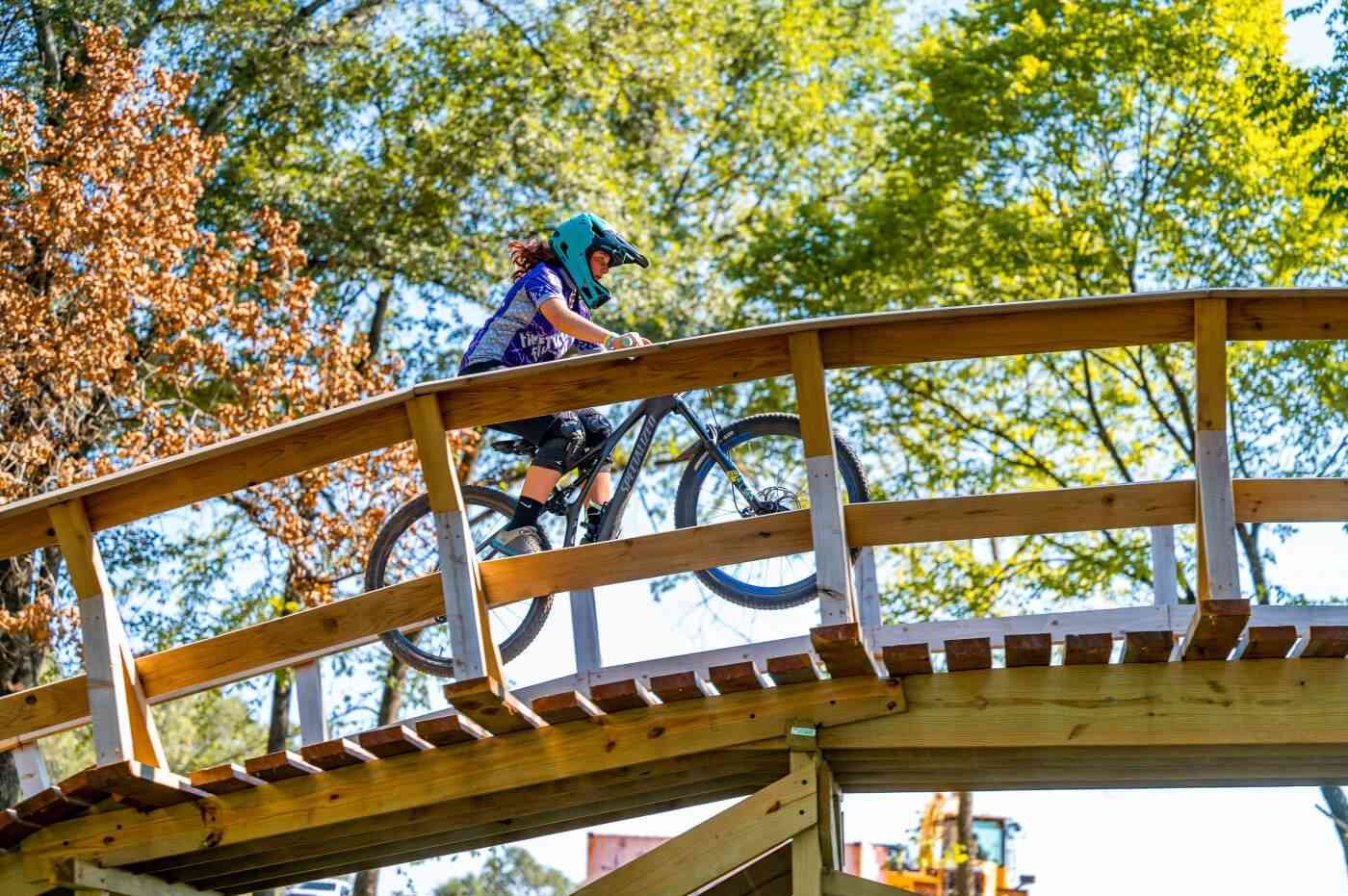
Jump: A jump is usually an engineered ramp or bumps at the bottom of a hill or end of a straightaway that allows riders to gain speed and then launch into the air. Jumps can vary in size and difficulty and are present on most trails.
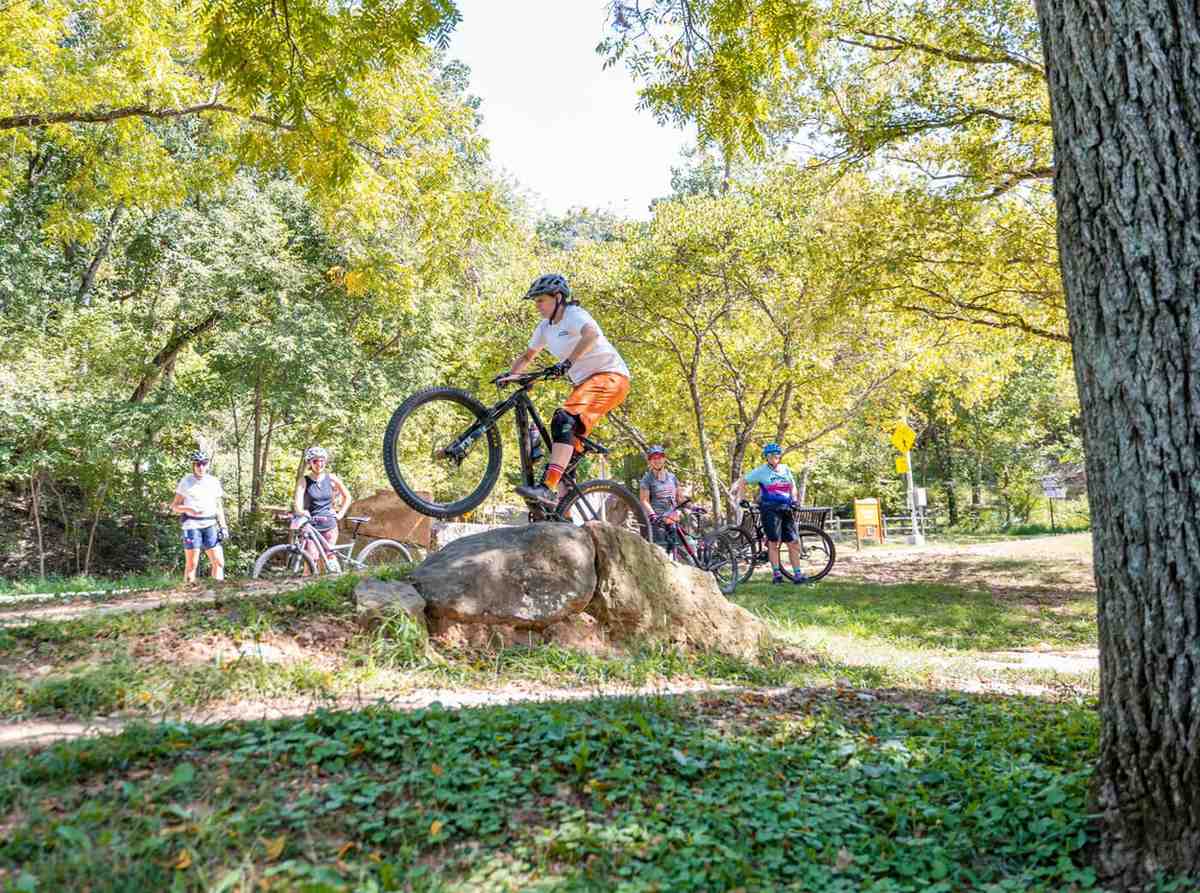
Skinny: A skinny is a long narrow feature on trails that is usually a log or rocks. This obstacle can be difficult because it can be hard to ride in a straight line with wider mountain bike tires. Skinnies can be found on most trails at Slaughter Pen in Bentonville. When practicing skinnies it is recommended to have a spotter to help you with balance and with bailing if you need to.
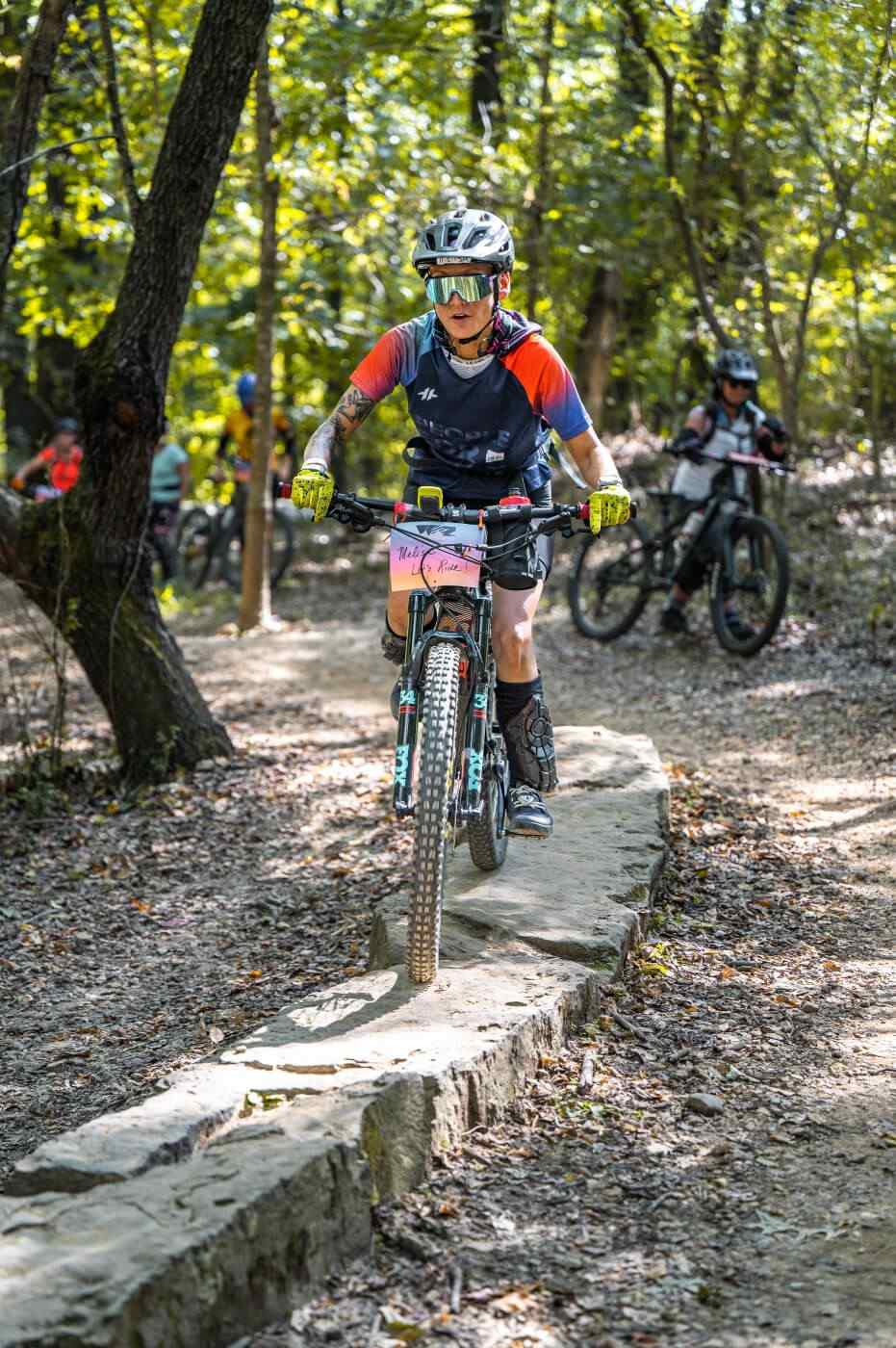
Creek Crossing: A creek crossing is exactly how it sounds. These obstacles are where you ride through a creek bed, either dry or wet. A trail with a creek crossing is Good Vibrations at Coler Mountain Bike Preserve.
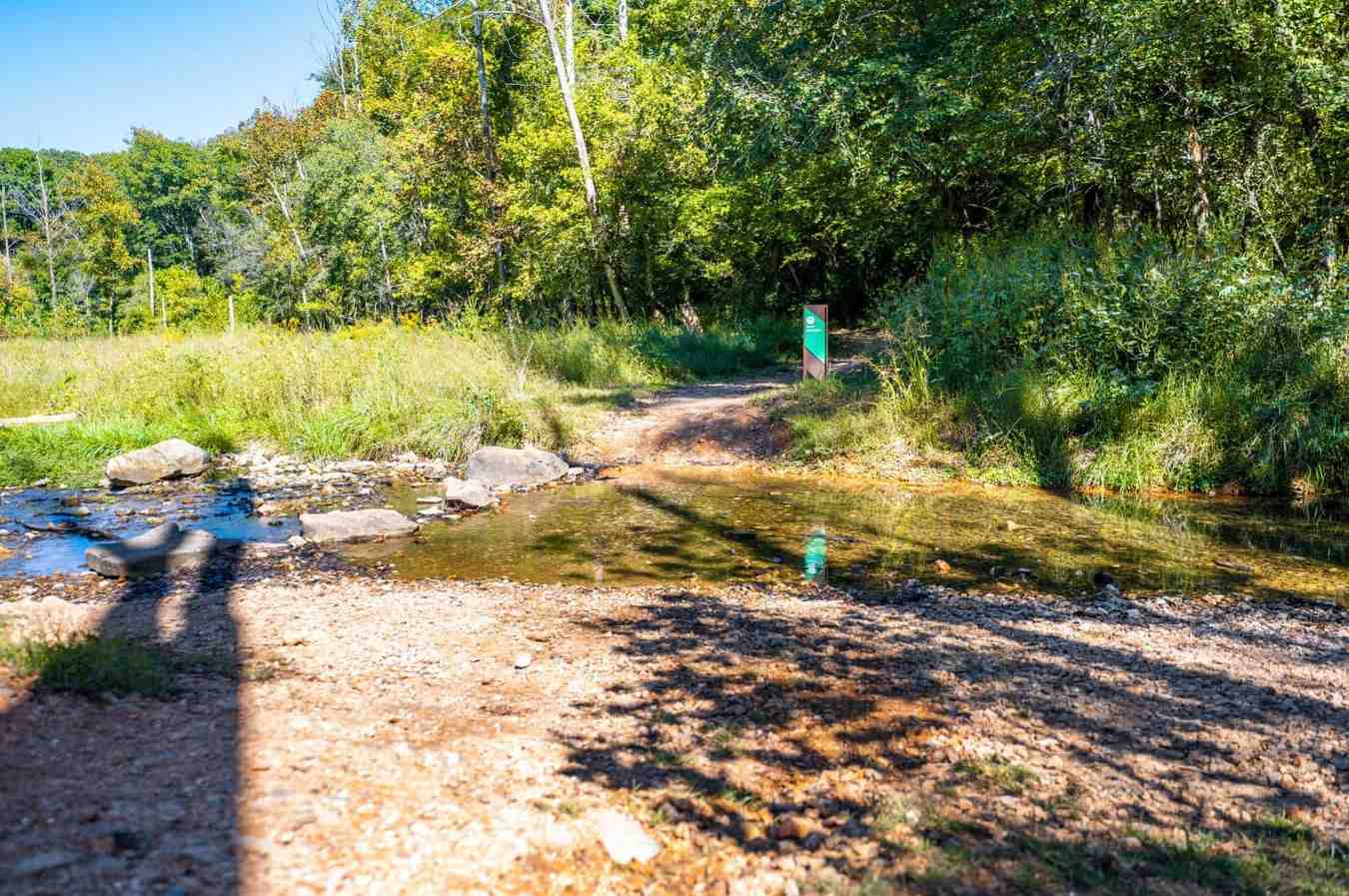
Drop: Not to be confused with a jump, drops are a sudden drop off a ledge after a flat entrance. They can be manmade and found at trail systems like Slaughter Pen or Coler Mountain Bike Preserve. The Tsa La Gi Bike Park in Fayetteville, Arkansas, is a great location to practice your drops and jumps on a downhill skills course.
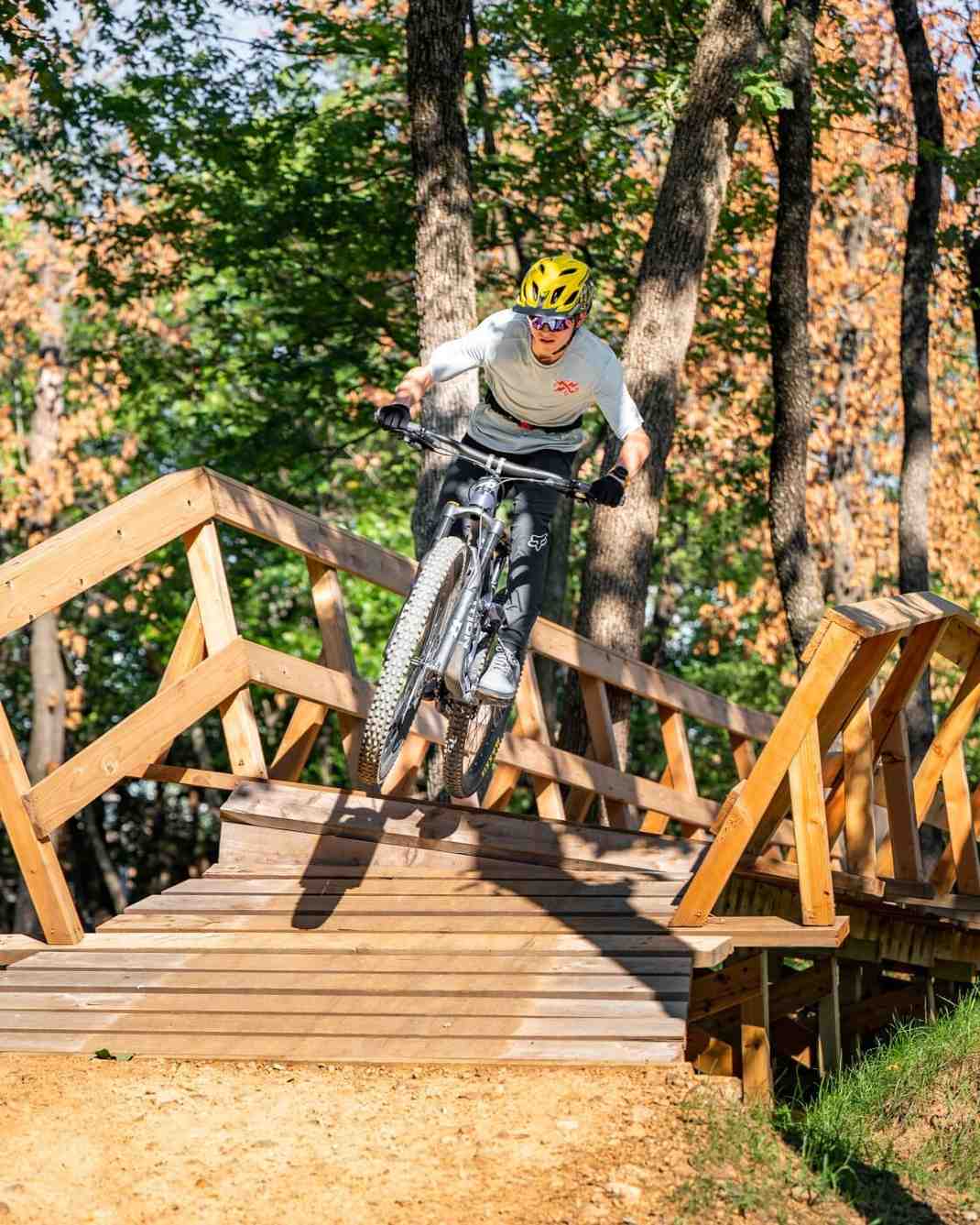
Jargon & Slang
- Hardtail: A type of mountain bike with a suspension in the front only. Harsher ride but usually more affordable for beginners.
- Chatter: Jargon for loose and rocky terrain that makes a chattering noise when riding over it.
- Bail: A tactical move to ditch or jump off your bike to avoid a more severe crash or injury. For example, you may bail off your bike to avoid hitting a tree or rock.
- Baby Heads: A rather unique slang but baby heads are referred to as rock obstacles around 4-5 inches tall and the shape of a baby's head.
- Attack Position: The attack position is the position of the rider's body as they are going down steep and rocky terrain. Your body is leaning into the handlebars, and you are standing up out of the seat with elbows out in a bend and looking straight ahead, not down at the obstacles.
- Full Squish: Full squish is slang for a full-suspension mountain bike.
- Fire Road: While trails are made specifically for recreation, fire roads are gravel or dirt roads that were made for access in case of a brush or forest fire and are great for riding your bike along if it is public property.
- Steezy: When a rider makes a technical obstacle or course look easy and usually does tricks to make it look stylish.
- Travel: Travel is the amount of movement in your suspension. On hardtails, it is how far the front fork can extend or compress when going over or into obstacles. While on full suspension bikes it is the amount of compression and extension the front fork and rear spring can move when going through or over obstacles.
- Wheelie: When the rider can lift the front wheel in the air and then travel forward by pedaling or coasting while the wheel is suspended.
- Gnarly: One of the most iconic and used slang terms. Gnarly is used after a rider goes down a terrifying or difficult trail or obstacle.
Safety Tips
There is always a risk when mountain biking because it is such a demanding and sometimes unpredictable sport. There are ways to limit the risk of injury, but it is important to note you are responsible for your own safety at all times when mountain biking. However, here are some safety tips to help keep yourself safe when on the trails.
Equipment: One of the most important parts of safely mountain biking is ensuring you have proper working equipment. The obvious starts with riding a helmet. If you crash a helmet could save your life, so always wear one and ensure it is fastened correctly. The next part of this tip is to check your bike and make sure everything is functioning correctly. For example, brakes work, pedals and handlebars are fastened tight, and the chain is not loose. Also, bring essential items like water and food to stay energized out in the field. We also recommend having the equipment to repair a flat tire since obstacles on some more advanced trails can be extremely difficult to navigate on foot if your bike breaks. If you need to have your bike checked and tuned up then UREC at the University of Arkansas is a great resource to make sure you are ready for the trails.
Ability: Know your ability and skill level by using the charts above to judge what trails you can ride on. If you find yourself on a trail that is testing the limits of your ability then ride at speeds that allow you complete control of your bike and do not push yourself into dangerous situations. Another way to judge a trail is to look at trail maps and conditions before heading out.
Rules & Signs: Following trail and road signage help keep you and others safe. Bikers have to treat stop signs as yield and stoplights as stop signs. Trail conditions and signs also let you know what to expect on the trail, such as pedestrians or equestrians. If you are passing slower traffic, make sure you ALWAYS let them know you are passing them by shouting out "on your left" or "on your right." If you are in a group, let them know how many more riders are behind you.
General Safety: Before heading out, try to get a friend or someone to ride with you. If you have to ride alone then let someone know where you are going and how long you will be gone so they know when to expect you and where to find you if something happens. Mountain biking is a great way to exercise and get outdoors and have fun, and it is safe if you use common sense and have an understanding of some basic trail safety. So, don't let the risk discourage you from enjoying the sport.

A Few Of Our Favorite Spots
While not a comprehensive list, here is a taste of some excellent mountain bike parks with trails for every skill-level rider in Northwest Arkansas.
Mount Kessler Regional Park in Fayetteville, Arkansas
Centennial Park in Fayetteville, Arkansas
Fitzgerald Mountain in Springdale, Arkansas
The Railyard Bike Park & Lake Atalanta in Rogers, Arkansas
Slaughter Pen in Bentonville, Arkansas.
Coler Mountain Bike Preserve in Bentonville Arkansas